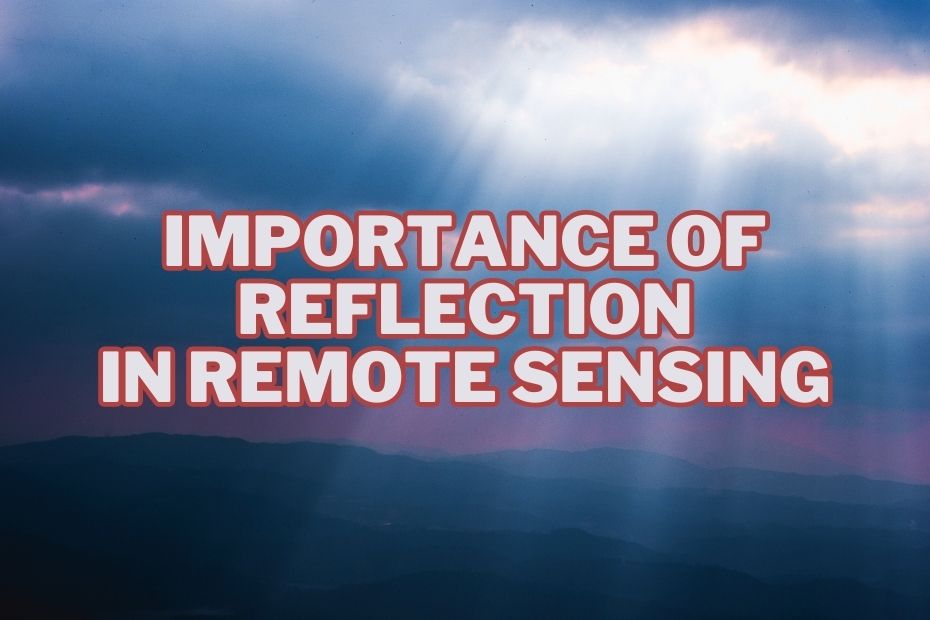One of the essential concepts in remote sensing is reflection. Reflection is the process of bouncing back of electromagnetic radiation or light waves from a surface.
In remote sensing, the reflection of light from the earth’s surface is used to gather information about the features and characteristics of the surface. In this article, we will discuss the importance of reflection in remote sensing.
Understanding Reflection In Remote Sensing
Before diving into the importance of reflection in remote sensing, it is essential to understand the basic concept of reflection.
Reflection occurs when electromagnetic radiation or light waves strike a surface and bounce back. The amount of light that is reflected back depends on the surface’s characteristics, such as texture, roughness, color, and composition.
Remote sensing sensors use this reflected light to gather information about the earth’s surface. The sensors detect the amount of radiation that is reflected back and convert it into an image. This image is then processed to extract various features such as vegetation, water bodies, soil types, and land-use patterns.
Types of Reflection
There are two types of reflection that are important in remote sensing: specular reflection and diffuse reflection.
Specular Reflection
Specular reflection occurs when radiation is reflected off a smooth surface, such as a mirror or calm water. In this type of reflection, the angle of incidence is equal to the angle of reflection. This means that the reflected radiation has the same intensity and direction as the incident radiation.
Diffuse Reflection
Diffuse reflection occurs when radiation is reflected off a rough surface, such as a forest or a field. In this type of reflection, the reflected radiation is scattered in many directions, which means that it loses some of its intensity and direction.
Importance of Reflection In Remote Sensing
Reflection plays a vital role in remote sensing as it helps in identifying and analyzing various features and characteristics of the earth’s surface. Some of the importance of reflection in remote sensing are:
1. Identification of Features
Reflection helps in identifying various features and characteristics of the earth’s surface. Different surfaces reflect different amounts of light, which helps in identifying features such as water bodies, vegetation, and land-use patterns. For example, water bodies reflect more light than vegetation, which helps in identifying them from satellite images.
2. Quantification of Features
Reflection helps in quantifying various features of the earth’s surface. The amount of radiation that is reflected back from a surface depends on the surface’s characteristics, such as texture, roughness, and color. By measuring the amount of radiation that is reflected back, we can quantify various features such as vegetation density, water quality, and soil moisture content.
3. Monitoring Environmental Changes
Reflection helps in monitoring environmental changes such as deforestation, land-use changes, and urbanization. By comparing satellite images taken at different times, we can observe the changes in the earth’s surface over time. This helps in understanding the impact of human activities on the environment and taking appropriate measures to reduce their impact.
4. Disaster Management
Reflection helps in disaster management by providing real-time information about the affected areas. In case of natural disasters such as floods, hurricanes, or earthquakes, satellite images can be used to identify the affected areas and assess the damage. This helps in planning and executing relief and rescue operations efficiently.
Factors That Affect Reflection
Several factors can affect how radiation is reflected from the Earth’s surface. Some of these factors include:
- The angle of incidence: This is the angle at which radiation from a remote sensing sensor hits the Earth’s surface. The angle of incidence can affect the amount of radiation that is reflected back towards the sensor.
- The type of surface: Different surfaces reflect radiation differently. For example, water reflects radiation differently than vegetation or soil.
- The wavelength of radiation: Different wavelengths of radiation interact with the Earth’s surface in different ways. For example, shortwave radiation is absorbed by the Earth’s surface, while longwave radiation is emitted by the Earth’s surface.
Conclusion
In conclusion, reflection is an essential concept in remote sensing that helps in identifying, quantifying, and monitoring various features and characteristics of the earth’s surface. It plays a vital role in various fields such as geography, geology, agriculture, forestry, and environmental science. Remote sensing has revolutionized the way we view and understand our planet, and reflection is one of the key elements that make it possible.
READ MORE:
- Best Remote Sensing Software
- Advantages and Disadvantages of Remote Sensing
- How Can Remote Sensing Help Fight Global Warming
FAQs
How is reflection used in disaster management?
Reflection is used in disaster management by providing real-time information about the affected areas. In case of natural disasters such as floods, hurricanes, or earthquakes, satellite images can be used to identify the affected areas and assess the damage. This helps in planning and executing relief and rescue operations efficiently.
What are the different surfaces that reflect light differently?
Different surfaces reflect different amounts of light, which helps in identifying various features such as water bodies, vegetation, and land-use patterns. For example, water bodies reflect more light than vegetation, which helps in identifying them from satellite images. The amount of radiation that is reflected back depends on the surface’s characteristics, such as texture, roughness, and color.
Why is reflection important in remote sensing?
Reflection is important in remote sensing as it helps in identifying, quantifying, and monitoring various features and characteristics of the earth’s surface. It plays a vital role in fields such as geography, geology, agriculture, forestry, and environmental science.
What are the challenges in remote sensing due to reflection?
Some of the challenges in remote sensing due to reflection include shadow and occlusion, atmospheric effects, and spectral confusion.
